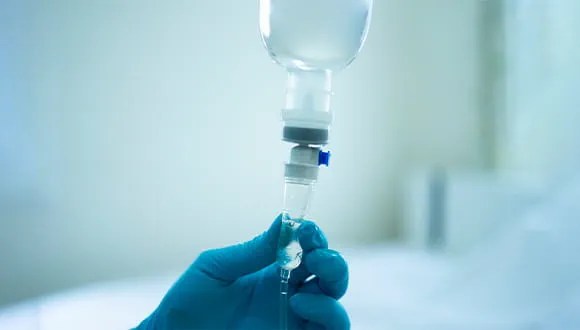Should You Try IV Therapy? Benefits And Risks Explained

These days, you may have noticed a lot of people talking about IV drips as the next big thing in wellness. Your Instagram feed is probably filled with influencers getting hooked up to a bag of vitamins, and a surge of ads from clinics offering these treatments in your area. The whole thing sounds simply amazing – a treatment that can give you instant energy, glowing skin, and rapid recovery from hangovers or intense workouts. But is this something you should actually consider, or is it just another wellness trend that will fade with time?
If you’re curious about IV therapy but not quite sure what to make of all the hype, fret not. Let’s take a deep dive into what IV therapy really is, work our way through its hype, and help you figure out if it’s a worthy addition to your life.
What exactly is IV therapy?
Before we get into whether you should try it, we need to understand what IV therapy is all about. In simple words, the role of an IV drip is to deliver vitamins, minerals, and other nutrients directly into your bloodstream. It’s a treatment that typically takes a small bit of your time, while you sit in a comfortable chair as the drip does its work.
The interesting bit comes from what actually goes into these drips, as there is a variety of types of IV drips available. Mixes like vitamin C infusions, the Myers’ cocktail, NAD+ drips for anti-ageing, glutathione for skin brightening, or hydration drips for hangover recovery are all common phrases in this sphere. Each mix promises slightly different benefits, and the specific formulations will vary depending on your health goals. The final objective remains the same: provide supplementation for your body more efficiently than regular oral supplements.
Why have IV therapies become so popular?
It wasn’t long ago that IV drips were something you’d only receive in a hospital setting, but nowadays, they are everywhere. While much of this popularity comes from celebrity endorsement and social media influence, the wellness industry has also grown massively in recent years. IV therapies, as you would expect, fit perfectly into that narrative of optimising one’s health and taking control of one’s wellbeing. Of course, this kind of popularity also demands a certain level of research, so let us look at what the actual science tells us about these treatments.
What does science say about IV drips?
From a strictly scientific perspective, IV therapy is a medical necessity in very specific situations. If you’re severely dehydrated, malnourished, or unable to absorb nutrients through your digestive system, IV treatment can quite literally be life-saving. When it comes to elective IV therapy for healthy individuals, what you’ll hear the most about is bioavailability. This refers to the proportion of a nutrient that actually enters your bloodstream and becomes available for your body to use. IV infusion delivers nutrients directly into your bloodstream, which allows 100% bioavailability compared to oral intake. This, in turn, is what makes them superior to oral supplements.
While full nutrient absorption sounds nice, IV therapy does come with a few side effects to keep in mind. The most common of these are bruising at the injection site, discomfort during the infusion, and mild dizziness that usually passes quickly. However, there are also more serious risks associated with the procedure. For instance, infection is possible if the environment and the needle aren’t sterilised properly. Similarly, there’s also the risk of receiving too much of certain vitamins or minerals, which can cause toxicity.
These last two things happen because the IV therapy industry isn’t tightly regulated, and as a result, even unqualified saloons and drip bars are starting to offer these procedures. Yes, there are clinics that operate with proper medical supervision and in a sterile environment, however, there are also others that cut corners to keep costs down, with zero regard to your health.
This is precisely why it is important to do your own research before booking a session. Making sure the clinic is run by qualified healthcare professionals, proper health assessments before treatment while offering a deep level of personalisation, and that they’re transparent about what goes in their drips and how they source their ingredients.
Who benefits from IV therapies the most?
If you’re recovering from a particularly nasty bout of food poisoning or a stomach problem that’s left you severely dehydrated, an IV drip can help you bounce back faster than oral rehydration alone. Athletes who’ve pushed themselves to extreme levels of dehydration might also find legitimate benefit from this treatment. The more important use lies with medical conditions that affect nutrient absorption, like Crohn’s disease or chronic fatigue syndrome. People with such conditions may derive tremendous benefit from IV nutrient therapy under proper medical supervision.
These days, however, people are also reaping the benefits of these drips as a form of preventative measure. It is thought of as a proactive approach to optimising your health, particularly during long periods of stress thrown at us by modern life. After all, long work hours, poor sleep, erratic meals, and constant digital fatigue can all deplete the body’s energy and nutrient reserves over time. IV therapy, in such a situation, is nothing less than a blessing in disguise, replenishing what the daily stressors of our life drains away from us and supporting our recovery from exhaustion or burnout.
What about the cost factor?
A single session of an IV therapy can range anywhere from £50 to a few hundred pounds, depending on the customisations you may seek during the treatment. As such, you can think of it as an investment in your long-term health and well-being.
Across all the specialised wellness clinics in London, you’ll notice that the prices tend to vary depending on what’s being infused. To curb this and make the treatment easier on the pocket, most clinics now offer package deals and bundled offers that significantly bring down your overall expense.
One important thing to note here is that the prices of these IV drips reflect the quality of ingredients used, medical expertise, and the level of care provided to you. So, while non-clinical places like salons may offer these mixtures at a cheaper rate, it is highly advised to only seek these infusions from the experts for a smooth and bespoke experience.
Moving forward with your decision
In the end what IV therapy offers is a direct delivery method for nutrients to your body. When combined with a healthy lifestyle, you’ll find the post-treatment experience quite close to magical. The most important thing when going for this therapy is to approach it thoughtfully. Start by talking to your GP about whether IV therapy makes sense for your individual situation. Get blood tests done to see if you have any deficiencies. Then, should you decide to give it a go, choose a reputable clinic with qualified medical staff, and walk in with realistic expectations on what to expect.
Speaking of reality, remember that the foundation of good health will always be the basics – from eating well, getting quality sleep, moving your body, to managing stress. Think of IV therapy as the best complementary support system in your toolkit. So, if you want to explore this option, do so as an informed consumer rather than someone chasing wellness trends. Once you take that approach, the answer to whether IV therapy deserves a place in your personal health strategy, will automatically come to you.




